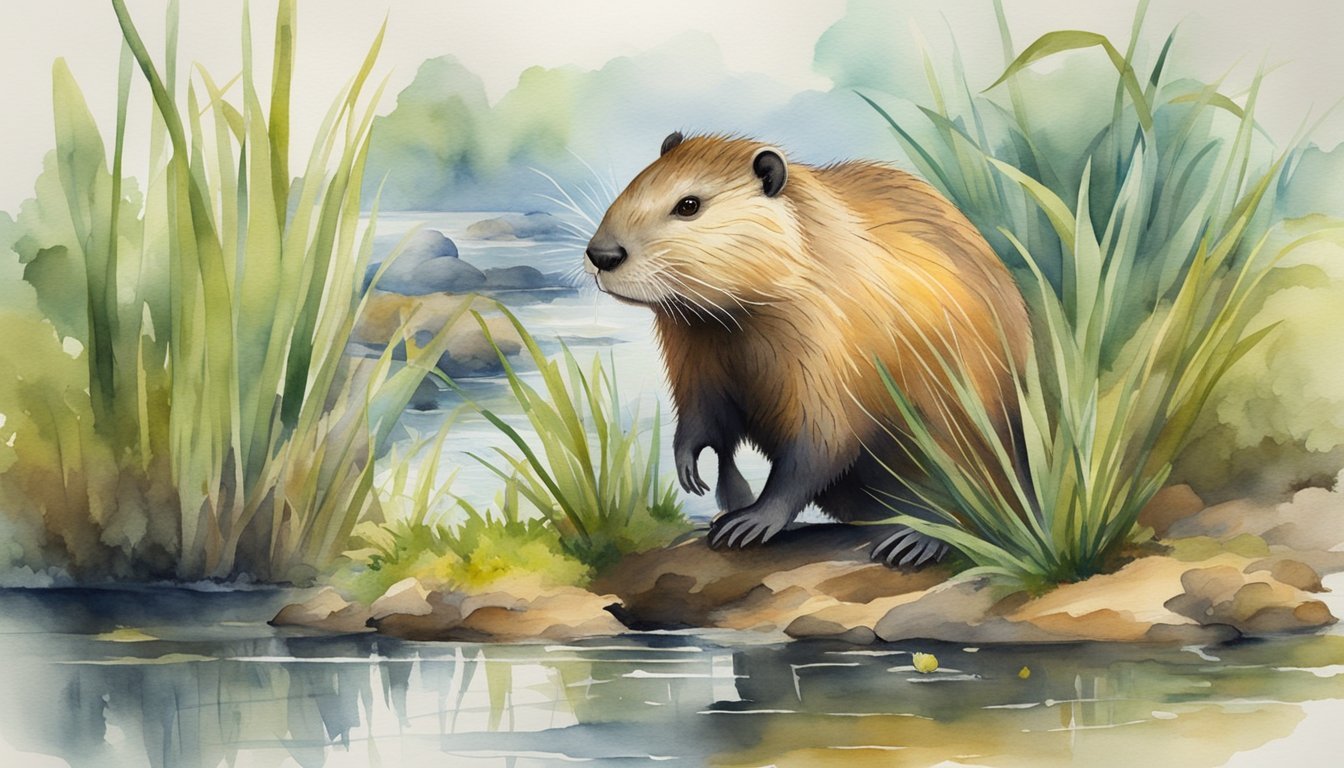Nutria Overview
The nutria, also known as the coypu, is a large semi-aquatic rodent native to South America.
This creature is well-known for its destructive feeding habits which impact ecosystems, particularly wetlands.
Identification and Description
Nutria are identifiable by their robust bodies and webbed hind feet, a characteristic that aids their swimming ability.
They possess a long whiskered face and small eyes and ears, which are suited to their aquatic lifestyle.
Adult nutria typically have a body length of up to 70 cm and a cylindrical, rounded tail that can measure up to 45 cm.
Historical Background
Originally from South America, nutria were brought to other regions including the United States for the fur farming industry.
Following the collapse of the fur market, many animals were released or escaped, leading to large feral populations that are now considered invasive.
Habitat and Distribution
Nutria thrive in various wetland habitats, including marshes, lakeshores, and riverbanks.
Today, these aquatic rodents are spread across many regions, thriving particularly in areas such as the southern United States where their burrowing and feeding habits can cause significant ecological damage.
Diet and Feeding Habits
As herbivorous creatures, nutria primarily feed on river plant stems, bark, and leaves.
They are known for their ability to dramatically alter their environment due to their voracious feeding which can denude wetlands of vegetation.
Environmental Impact and Management

Nutria, also known as coypu, are invasive rodents that have significantly affected various ecosystems.
Their impact on the environment, efforts to manage and eradicate them, and their place in human culture highlight the complexities of dealing with invasive species.
Effects on Ecosystems
Nutria feed on a wide range of vegetation, including the roots and stems, which are crucial for the stability of wetlands.
Their feeding habits can lead to severe erosion, particularly along the banks of lakes, rivers, and streams, causing damage to the freshwater ecosystems in the United States, especially in areas like the Gulf Coast and Chesapeake Bay.
This erosion can also result in the loss of critical plant species that provide habitat for other wildlife.
Because they are prolific breeders, achieving sexual maturity within months and having a high gestation rate, nutria populations can explode, exacerbating environmental damage.
Control and Eradication Efforts
To combat the growing populations, various eradication and control methods have been employed by different regions.
In the U.S. states like Louisiana and California, strategies include trapping nutria for their fur as part of a bounty program, as well as efforts to reduce their numbers through targeted eradication measures.
Beside traditional trapping, other innovative methods like the use of predator urine have been tested to deter nutria from certain areas, aiming to protect agricultural crops and natural habitats from further damage.
Nutria in Human Culture
Nutria have left an indelible mark on human culture, especially within regions where they have become a notorious pest.
Introduced originally for the fur industry in places like Brazil and the Pacific Northwest, their subsequent release into the wild has led to a slew of environmental and cultural repercussions.
In Louisiana’s Gulf Coast and the Delmarva Peninsula, the animals have become so entrenched that they’ve inspired local folklore and have been featured in documentaries like “Rodents of Unusual Size”, drawing attention to the magnitude of their invasive presence.

